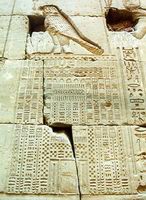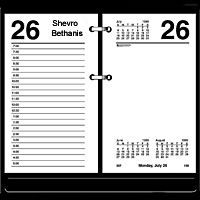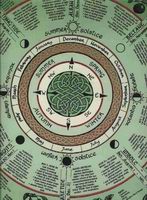
Home |
Up |
Structure |
Conversion |
Special Days |
Year Wheel |
Wall Calendar |
Leap Years |



Calendars have been around for thousands of years. It's time for a new one!
Today is
Since the beginning of human civilisation, we have sought to regulate our daily activities in time with the seasons. The phases of the sun provided a resolution too coarse for daily life and so the phases of the moon were superimposed on them and the calendar was born.
There are nearly 12 cycles of the moon per year and these are the basis of the months. It was convenient to break the phases of the moon cycle into 4: new, waxing, full and waning, and these are the basis of the weeks. Unfortunately, the cycles and phases of the moon do not break neatly into exact weeks. Neither does the year break neatly into moons.
A whole raft of schemes were tried in an attempt to force a square peg into a round hole. Because 12 moons is somewhat shorter than a solar year, the Romans would simply add an extra or intercalary month whenever it suited them. This approach is fine if you don't need to plan ahead, but even 2,000 years ago it was generally unacceptable not to know when the next year would start. In addition, religious festivals were based around the coincidence of moons and seasons and it wasn't good enough any longer from the organisational point of view to have to wait until the sun crossed the stone before calling for a party!
What was needed was a strict mathematical algorithm that would predict the phases of the sun and moon for years in advance. Astronomy and mathematics in those days were more sophisticated than some might think, and some reasonably accurate schemes were available. Some of these are still used today, for example: the Chinese, Islamic and Hebrew systems. However, these are far too complex for normal life, involving many year cycles and intercalary periods, so they are restricted to the scheduling of religious festivals.
People liked the idea of days, weeks and months, but they also wanted a simple, predictable, yearly calendar. Eventually the desire for simplicity became more important than the need to predict the moon, so the moon became separated from the calendar that it gave birth to.
Julius Caesar broke the final link between months and the moon in 45 BC when he, (in consultation with Sosigenes of Alexandria), ushered in the calendar that is almost exactly the one that is universally used today. Whilst it was a great advance in its time, it suffers from the fact that it is built around following the moon even though it no longer does that.
The Julian Calendar that was later modified by Pope Gregory is inconvenient for modern life for the following reasons:
- The months have a varying number of days without any system. Sure, you can learn a rather awkward poem to remember them, but it's a nuisance all the same and most people simply reach for their pocket calendar or their mobile phone.
- Weeks do not fit neatly into months, meaning that you can't envisage what you might be doing on a given day of the month without consulting a calendar. How often do hear "the 16th... what day of the week is that?"?
- Each year starts on a different day of the week, making it difficult to plan events that require being attached to a weekend.
- The exact day of the solstices and equinoxes varies, (by one), from year to year, further complicating the scheduling of festivals that are tied to the seasons.
All this can be resolved when one realises that 13 x 28 = 364. Ie with 13 months of 28 days and 1 intercalary day1 we can have a neatly regulated year of 7-day weeks that is the same every year, enabling permanent planning of holidays and events.
That is what the Thellid2 Calendar is all about.
At first glance there seems no absolute necessity to use a 7 day week or a 28 day month, since any convenient period that fits into the year ought to do. However, when you look at the choices there are fewer candidates than you might suppose. If you want a system of even length weeks with only 1 or 2 days left over you find that 7 goes into 364 52 times and 5 goes into 365 73 times. No other convenient week length will fit3. Of these 2 candidates only the 52 week option can be further divided to give even length months. So there really is no comfortable alternative. Furthermore, the 7 day week has been proven to suit the rhythm of human life over thousands of years. What's not to love?
The Thellid Calendar is not the only 13 month calendar in existence. It is very similar to the Positivist Calendar proposed by Auguste Comte in 1849. It is somewhat less similar to the International Fixed Calendar proposed by Moses B. Cotsworth in 1923. FWIW I arrived at my results before I became aware of their work, but kudos to them for getting there first!
The Thellid Calendar differs from other 13 month calendars most notably in that:
- The start of the year is tied to the solstice, so that there is never any need to adjust the calendar to allow for accumulated error.
- The weekdays are given new, neutral names.
- The months are given new, neutral names.
Other than being yet another development in the quest for Calendar Reform the Thellid Calendar also forms the basis of the ceremonial year for the Church of Infinite Dimensions.
- And an additional intercalary day each leap year.
- Thellid is just an adjective that I came up with to name this scheme. It has no other meaning. The Thellid Calendar is not intrinsically tied to the Church of Infinite Dimensions. It stands up perfectly well on its own.
- Next best option is probably 60x6 day weeks with 12x5 week months, but that leaves 5 1/4 days over...